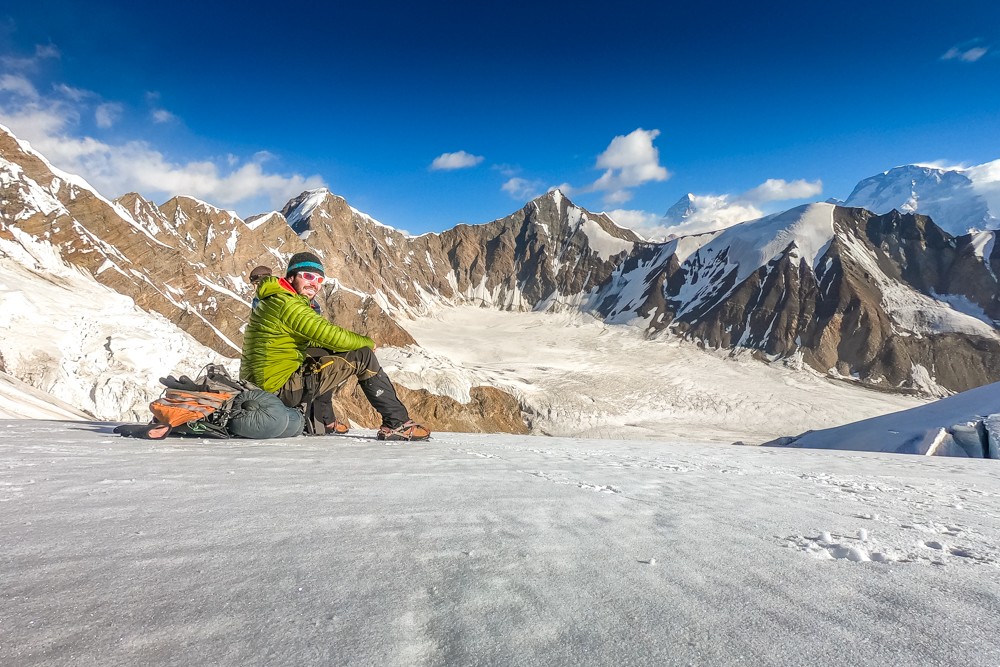Our extensive K2 base camp gear list includes everything you’ll need for this epic trek to the second-highest mountain on Earth
Having just returned from my K2 base camp trek in Pakistan, I thought sharing my complete K2 base camp gear list as a point of reference for future trekkers would be helpful.
Trekking guides should organise all camping, cooking, and technical equipment (ropes, ice axes, and crampons), but trekkers must bring their own sleeping bags, trekking gear, clothing, and personal items.
You can buy some equipment in Skardu or Islamabad, but I would advise that you do all your shopping before leaving home to prevent last-minute emergencies.
Some new bits and pieces
I had most of the gear beforehand, but I did treat myself to a couple of new items. I upgraded my trekking poles to a pair of Leki ultralight folding poles which are super quick to lock into place. I also packed a new Marmot sleeping bag with 650-fill-power down rated to -18°C – ideal for sleeping on a glacier!

Finally, I treated myself to a pair of Skinners sock shoes. During my recent Arctic Circle Trail trek, I didn’t pack appropriate footwear for the river crossings. The Skinners proved themselves invaluable in Pakistan. In fact, I’ve now added them to the ‘essentials’ section of my trekking spreadsheet. (Yes, I have a spreadsheet and I’m not ashamed of it…)
K2 base camp gear list
The K2 base camp gear list below comprises everything I took with me. Some of the electronics and toiletries are optional, but most items are essential unless otherwise stated. Where possible, I’ve included links to the gear I took with me.
K2 base camp shoppable gear list
You can also access my complete K2 base camp shoppable gear list via the button below.
Camping/trekking equipment
- 1 x backpack (50l+) – read our guide on how to choose a backpack
- 1 x sleeping bag (four seasons/rated to -10°C/14°F)
- 1 x camping mat – the trekking company provides basic foam mats, but I would recommend taking a thicker, warmer matt for extra comfort
- 1 x camping pillow (optional)
- 1 x trekking poles
- 1 x gaiters
- 1 x waterproof backpack cover
- 1 x hydration pack or bladder (optional, but I definitely recommend taking one)
- 1 x 1lt Nalgene water bottle (if you don’t take a hydration pack then you need two of these)
- Waterproof liners/dry sacks
- Spare bootlaces
- Compass

Clothing
- 1 x hiking boots (worn frequently before departure)
- 1 x sock shoes (for river crossings and around camp)
- 4-5 x breathable underwear
- 4-5 x thick trekking socks
- 2 x liner socks (optional)
- 1 x base layer bottoms
- 2 x hiking trousers/zip-offs
- 1 x softshell trousers
- 1 x waterproof trousers
- 2-3 x base layer tops
- 1 x long-sleeve outer layer/fleece
- 1 x light down jacket – read our guide on how to choose a down jacket
- 1 x waterproof jacket/shell – read our guide on how to choose a waterproof jacket
- 1 x cap or sunhat
- 1 x neck buff
- 1 x fleece neck col
- 1 x beanie or warm hat
- 1 x sunglasses
- 1 x pair liner/lightweight gloves
- 1 x pair of warm gloves (ideally waterproof/mountaineering)
- Sleepwear (I wore woollen base layers)

Toiletries and medication
Every trekker should carry a personal first aid kit on them at all times. Try to use biodegradable toiletries in the mountains.
- Sunscreen (SPF 40+)
- Lip balm (SPF 30+)
- Insect repellent (only required at lower altitudes)
- Soap (biodegradable)
- Coin tissues
- Lightweight travel towel
- Toothbrush and toothpaste
- Roll-on deodorant
- Toilet roll/tissue
- Antibacterial wipes (biodegradable)
- Hand sanitiser
- Imodium (or similar diarrhoea medication)
- Ibuprofen
- Paracetamol
- Antiseptic cream
- Plasters / Band-Aid
- Compeed (blister treatment)
- Electrolyte tablets
- Diamox – for altitude sickness (optional – I prefer not to use it, but many do)
- Water purification tablets (50 litres+) or water filter
- Any additional prescription drugs you may be taking

Electronics
- Smartphone and charger
- Powerbank
- Solar panel
- USB and power cables
- DSLR camera with spare batteries (optional)
- GoPro Hero7 and spare batteries
- Lightweight mini-tripod
- Head torch

Documentation
- Passport + photocopies
- Spare passport photos
- Insurance certificate and details
- Flight information
- Visa information
- Spending money (allow $200-300 USD for tips)

Enjoyed this post? pin it for later…

Currently, there are very few up-to-date Pakistan guidebooks available. Therefore, we recommend the waterproof 1:175,000 Karakoram Trekking Map by TerraQuest for the K2 base camp trek.










